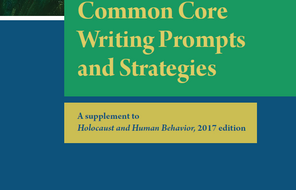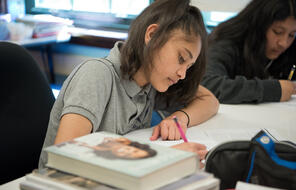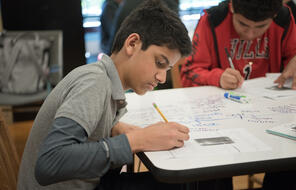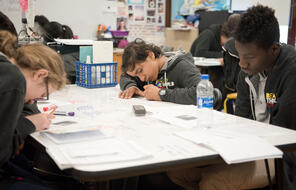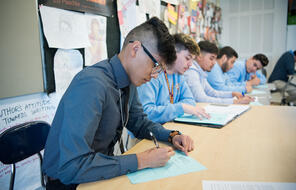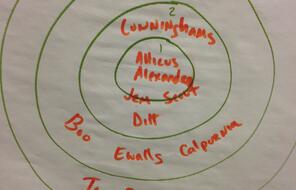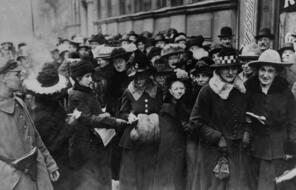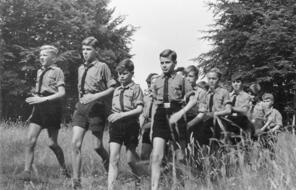
Introducing the Writing Prompt
At a Glance
Language
English — USSubject
- History
- Social Studies
Grade
6–8Duration
One 50-min class period- The Holocaust
Overview
Overview
In the first four lessons of the unit, students explore questions about identity, stereotyping, and group membership. This assessment step introduces students to a writing prompt that builds on these important themes and connects them to the history students explore later in this unit. The prompt is designed to serve as both a thematic frame for the unit and a final writing assignment at the unit’s end.
Unit Writing Prompt:
What does learning about the choices people made during the Weimar Republic, the rise of the Nazi Party, and the Holocaust teach us about the power and impact of our choices today?
Because the students have not yet been introduced to the Weimar era, the rise of the Nazi Party, and the Holocaust, this lesson begins with a modified version of the prompt:
Modified Writing Prompt for this Lesson:
How does learning about the choices people made throughout history help us understand the power and impact of our choices in the world today?
This modified prompt enables students to think through larger themes about history and decision making before delving into the specific history in later lessons. This lesson’s activities provide suggestions to help students start to understand the meaning of the prompt and to stake out a preliminary position in response to it. At key points later in this unit (after Lessons 8, 13, 18, 21, and 23), you will be prompted to give students the opportunity to revisit the prompt and consider stories, documents, and other evidence from history that may influence their thinking about it. At these times, students will also have the opportunity to reflect back on, and potentially modify, the initial position they articulate in this lesson.
There are two additional writing prompts that can be used as summative assessments for this unit included in Facing History’s Common Core Writing Prompts and Strategies: Holocaust and Human Behavior. This resource includes lesson plans and writing strategies to help guide students through all phases of the writing process.
Preparing to Teach
Notes to the Teacher
Procedure
Activities
Assessment
Extension
Materials and Downloads
Quick Downloads
Download the Files
Get Files Via Google
Introducing the Writing Prompt
Universe of Obligation
The Concept of Race
Unlimited Access to Learning. More Added Every Month.
Facing History & Ourselves is designed for educators who want to help students explore identity, think critically, grow emotionally, act ethically, and participate in civic life. It’s hard work, so we’ve developed some go-to professional learning opportunities to help you along the way.
Exploring ELA Text Selection with Julia Torres
On-Demand

Working for Justice, Equity and Civic Agency in Our Schools: A Conversation with Clint Smith
On-Demand

Centering Student Voices to Build Community and Agency
On-Demand


